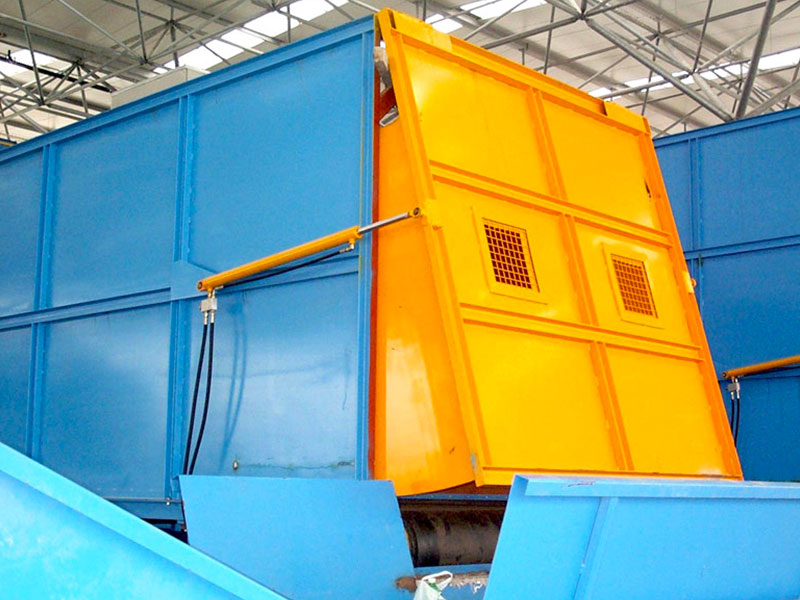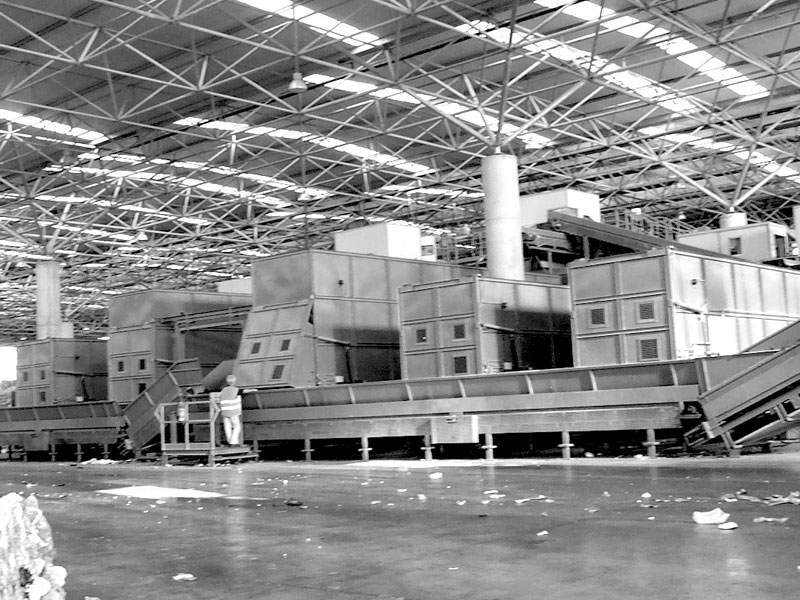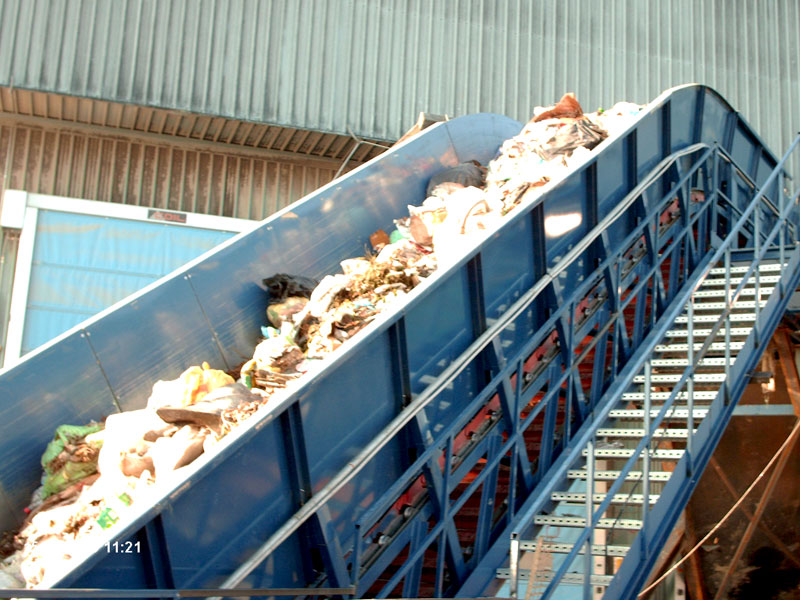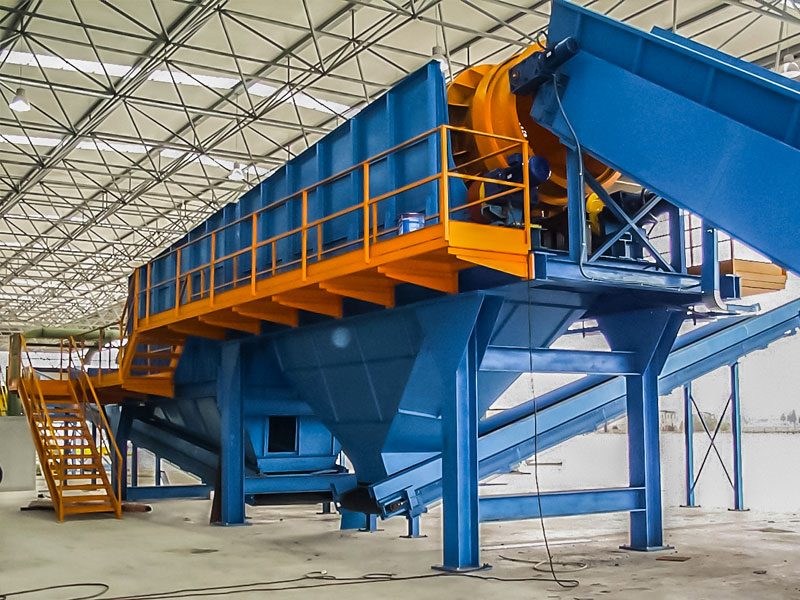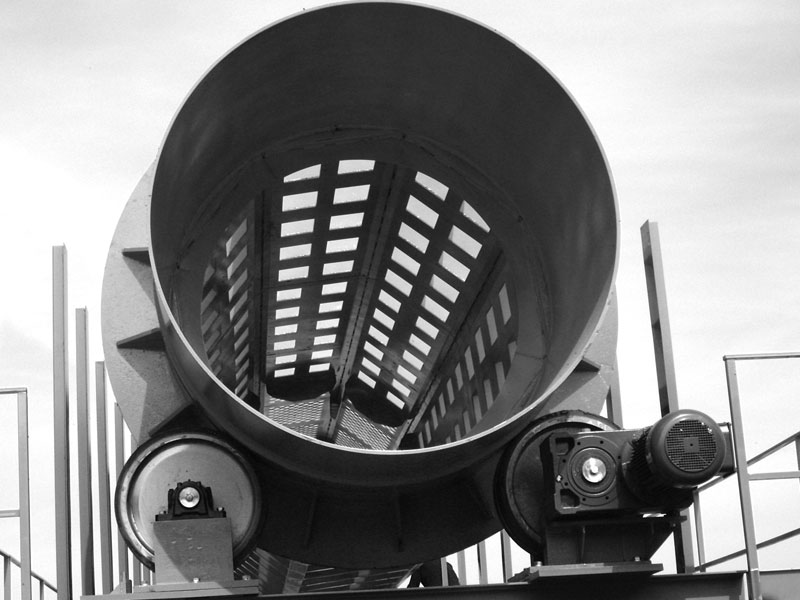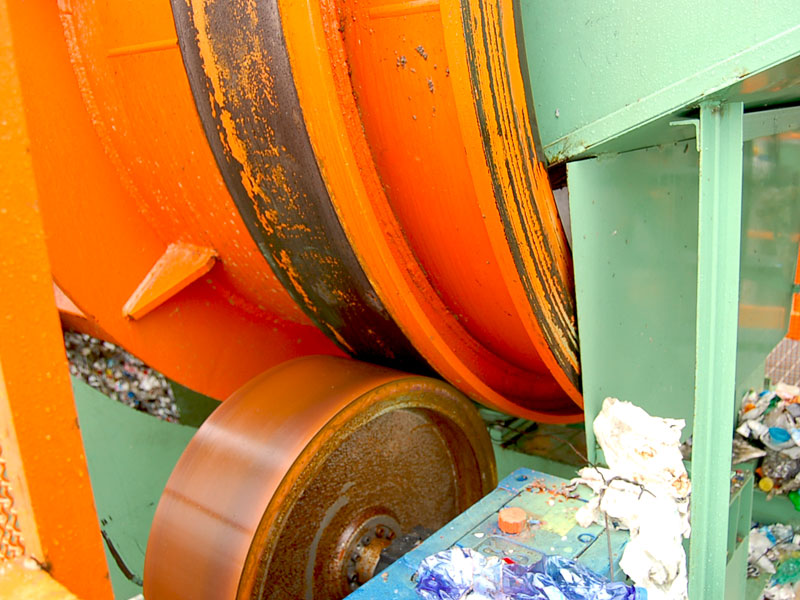Complete waste selection systems
Machines for handling selection from the separate collection of different types of materials
The complete waste selection systems are handling machines that individually or together serve for the selection from the separate collection of different types of materials. The material selection plant includes lines set up for sorting different types of waste, from paper, plastic, wood, small metals, glass, etc. The systems consist of conveyor belts, selection platforms, presses, separators, elevators and shredders. We custom-make the structures and machinery needed for selection systems, following all the assembly and installation phases of the belts and carpentry structures.
A complete waste sorting plant is a highly automated and integrated facility designed to separate and classify solid waste into different material types, such as plastic, glass, metal, paper, organic, etc... These plants are critical for recycling, resource recovery and sustainable waste management, reducing the amount of material going to landfills and improving waste treatment efficiency.
Receiving and Pre-Treatment Area:
Unloading Platforms:
Where trucks unload the collected waste. It is then transported via conveyor belts to the sorting sections.
Shredders/Crushers:
Machines that reduce the size of waste, making it easier to separate later.
Transport Systems:
Conveyor Belts:
Essential for moving waste between different stages of the sorting process.
Screws and Elevators:
Used to transport specific materials, such as metals or glass, to different parts of the plant.
Separation Systems:
Vibrating or Rotary Screens:
They separate waste based on size, filtering the smaller materials from the larger ones.
Magnetic Separators:
They extract metals ferrous metals from waste, such as iron and steel, using powerful magnets.
Eddy Current Separators:
Used to separate non-ferrous metals, such as aluminum and copper, through the induction of electrical currents.
Optical Separators:
Optical sensors to identify and separate specific materials such as plastic and glass based on color, shape and material type.
Aerodynamic Separators:
They use air currents to separate light materials such as paper and plastic from heavier ones.
Organic Waste Treatment Systems:
Anaerobic Digesters:
They treat organic waste to produce biogas and compost. These digesters use biological processes to decompose organic matter in the absence of oxygen.
Composting:
Organic waste is composted to produce natural fertilizers, with processes that can be accelerated by aeration and temperature control.
Storage and Batching Plants:
Storage Silos and Bunkers:
The treated inert materials are stored in silos or bunkers, ready to be used in other processes or sold.
Systems Dosing:
To accurately measure the amount of material needed for the production of concrete, asphalt or other products.
Recovery and Storage Systems:
Pressing and Compacting:
Selected materials, such as paper, plastic and metals, are compressed into bales for easy transportation and storage.
Silos and Warehouses:
The recovered materials are temporarily stored before being sent to recycling or sales centers.
Automation and Control:
Control Panels:
They manage the entire plant, monitoring each phase of the process and regulating operations to ensure efficiency and safety.
Sensors and Monitoring:
They control the quality of the selection, identify any anomalies and ensure that materials are separated.
Residual Waste Management:
Disposal Systems:
Waste that cannot be recycled is sent to landfills, incinerators or other disposal facilities.
Water Treatment Wastewater:
The water used in the plant is treated and recycled to reduce the environmental impact.
Advantages of a Complete Waste Selection Plant:
It allows to separate and recover a wide range of materials, significantly reducing the amount of waste that ends up in landfill. Most of the operations are automated, which reduces the need for manual labor, increases the precision and speed of the process. Improves waste management, promoting recycling and reuse of resources, reducing the overall environmental impact. It can be adapted to manage different types of waste depending on local or industrial needs.
Typical Applications:
Municipal Recycling Centers:
Management and sorting of household and commercial waste for recycling.
Waste Treatment Industries:
Facilities that treat industrial waste or specific waste streams for material recovery.
Integrated Waste Management Facilities:
Facilities that combine waste sorting, treatment and disposal in a single site.



